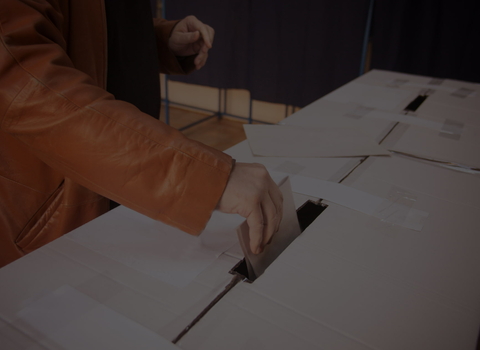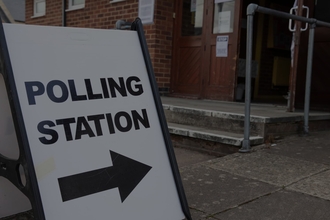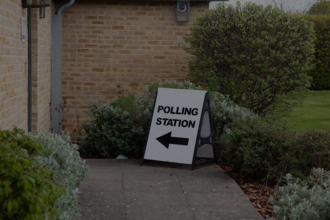While we can't tell you who to vote for, we can tell you how! Check out our easy steps below for a smooth voting process. Or, if you are asking yourself 'Does my vote really matter?', take a look at our page dedicated to your vote's impact this election.
Use the links below to explore this page or simply keep scrolling.
- How to register to vote (https://www.kentwildlifetrust.org.uk/election-hub/voting-guide#Register)
- What is valid Photo ID? (https://www.kentwildlifetrust.org.uk/election-hub/voting-guide#:~:text=Download%20voting%20guide-,2.%20Make%20sure%20you%20have%20a%20Photo%20ID%20ready!%C2%A0,-Recent%20legal%20changes)
- The different ways you can cast your vote (https://www.kentwildlifetrust.org.uk/election-hub/voting-guide#:~:text=concessionary%20travel%20pass-,3.%20Decide%20how%20you%20want%20to%20vote!%C2%A0,-There%20are%20three)
- How to apply for postal or proxy voting (https://www.kentwildlifetrust.org.uk/election-hub/voting-guide#:~:text=free%20election%20toolkit.-,4.%20Get%20ready%20for%20postal%20or%20proxy%20voting%20(if%20applicable)%C2%A0,-You%20need%20to)
- How to vote on the day (https://www.kentwildlifetrust.org.uk/election-hub/voting-guide#:~:text=vote%20by%20post.-,5.%20Vote!%C2%A0,-Voting%20by%20Proxy)
- Who can I vote for? (https://www.kentwildlifetrust.org.uk/election-hub/voting-guide#:~:text=Open%20configuration%20options-,Who%20can%20I%20vote%20for%3F,-Constituencies%20and%20who)
- What is tactical voting? (https://www.kentwildlifetrust.org.uk/election-hub/voting-guide#:~:text=Open%20configuration%20options-,Tactical%20voting,-So%20far%2C%20we%E2%80%99ve)

5 steps to making your vote count!
1. Register to vote
All eligible voters cannot vote until they register. The deadline for registering to vote in the upcoming 2024 General Election is Tuesday 18 June at 11.59pm.
You can register to vote on the UK government website. The process takes about five minutes and there’s even a process for people who want to register anonymously if you’re concerned about your name and address appearing on the electoral register.
Unsure if you’re already registered? You can email your local Electoral Registration Office to find out if you’re on the register. You can also use this service to update your details like your name and address or to get on/off the open register.
Find out if I am already registered
Not great with technology? You can download the paper form and send it into your local Electoral Registration Office.
Live abroad? You can still register to vote as a British citizen whilst living abroad, you may need your passport details whilst going through the registration process.
For a detailed guide to the registration process with pictures and helpful text, see the voting guide provided by the government here.
2. Make sure you have a Photo ID ready!
Recent legal changes mean that you’ll need a valid ID when voting in the upcoming General Election. Make sure you leave plenty of time to get an ID if you haven’t got one already. If you do not have any legal form of identification, you can apply for a free Voter Authority Certificate.
Apply for a Voter Authority Certificate now
The following forms of ID are classed as acceptable on the Government website:
-
a UK or Northern Irish photocard driving licence (full or provisional)
-
a driving licence issued by an EU country, Norway, Iceland, Liechtenstein, the Isle of Man or any of the Channel Island
-
a UK passport
-
a passport issued by an EU country, Norway, Iceland, Liechtenstein or a Commonwealth country
-
a PASS card (National Proof of Age Standards Scheme)
-
a Blue Badge
-
a biometric residence permit (BRP)
-
a Defence Identity Card (MOD form 90)
-
a national identity card issued by the EU, Norway, Iceland or Liechtenstein
-
a Northern Ireland Electoral Identity Card
-
a Voter Authority Certificate
-
an Anonymous Elector’s Document
You can also use one of the following travel passes as photo ID when you vote:
-
an older person’s bus pass
-
a disabled person’s bus pass
-
an Oyster 60+ card
-
a Freedom Pass
-
a Scottish National Entitlement Card (NEC)
-
a 60 and Over Welsh Concessionary Travel Card
-
a Disabled Person’s Welsh Concessionary Travel Card
-
a Northern Ireland concessionary travel pass
3. Decide how you want to vote!
There are three ways to vote and all are slightly different so make sure you know which is the most appropriate for you.
-
Voting in person – the most common way to vote
-
Voting by mail – if you’ll be away from home or abroad
-
Voting by proxy – if you’re away on voting day, living overseas, have a medical reason or disability or cannot vote in person because of work or military service.
Take the time to look at who your candidates are and read political party manifestos. If you’re looking for help on how best to vote for nature, we suggest you look at our Election Hub and apply to our Speak up for Nature mailing list to receive your free election toolkit.
4. Get ready for postal or proxy voting (if applicable)
You need to apply separately for a postal or proxy vote. The deadline to apply for a postal vote in 5pm on Wednesday 19 June. You must also be registered to vote.
Note* for proxy votes, you must apply by 5pm, 6 working days before election day. You may be able to apply for an emergency proxy vote passed this deadline if you have a valid reason such as a medical emergency, your voting ID was lost or stolen or changes were made to your employment circumstances. Proxy votes only last for one election whereas postal voting applications can last for up to three years.
Anyone can act as your proxy vote, as long as they’re registered to vote, are allowed to vote, can vote in the polling station on your polling card and can bring their own valid form of ID. If they cannot get to your polling station, they may contact your Electoral Registration Office to cast their proxy vote by post.
5. Vote!
Voting by Proxy
Your chosen proxy follows all the steps that you would if you were voting in person or by post.
Voting by post
You should receive a postal voting pack by post. In it, there will be:
-
Instructions on how to cast your vote.
-
A postal voting statement.
-
The ballot paper.
-
Envelope A for your completed ballot paper.
-
A return envelope B.
Carefully read the instructions delivered to your address, complete the ballot paper alone and in secret. Do not write anything else on the paper as this could stop your vote from being counted. Put your ballot paper in Envelope A and then put your Envelope A and voting statement in Envelope B and post it as soon as possible.
Your postal vote needs to be with the elections team at your local council by 10pm on polling day to be counted.
Voting in person
-
You will receive a polling card after you register to vote.
-
This card will tell you where your polling station is – you cannot vote anywhere else.
-
Polling begins at 7am and ends at 10pm on the day of the election.
-
Give your name and address to the staff inside the polling station when you arrive.
-
Show your voter ID (link to voter ID section) to confirm your identity.
-
You’ll be given a ballot paper containing a list of the candidates you can vote for.
-
Follow the instructions on the top of the ballot paper to vote for your preferred candidate.
-
Fold your card and deposit it into the ballot box before you leave.
Note: if you have a disability of any kind and you think you will require assistance with any of the above, please make sure to inform your local Electoral Registration Office.

Who can I vote for?
Constituencies and who is my MP?
The UK is divided into constituencies to create a roughly similar size and respect local ties and areas. Recently, constituency boundaries were reviewed and today, the UK has 650 total constituencies. In Kent, a new constituency was formed called ‘The Weald of Kent’ and the old constituency of ‘Maidstone and the Weald’ is now just ‘Maidstone and Malling’ which now covers a much smaller geographic area. North Thanet and South Thanet now become ‘East Thanet’ and ‘Herne Bay and Sandwich’.
Here's a list of Parliamentary Constituencies in Kent:
-
Ashford
-
Canterbury
-
Chatham and Aylesford
-
Dartford
-
Dover
-
East Thanet
-
Faversham and Mid Kent
-
Folkestone and Hythe
-
Gillingham and Rainham
-
Gravesham
-
Herne Bay and Sandwich
-
Maidstone and Malling
-
Rochester and Strood
-
Sevenoaks
-
Sittingbourne and Sheppey
-
Tonbridge
-
Tonbridge Wells
-
Weald of Kent
Confused? Don’t worry, we have you covered. All you have to do is type your postcode into our custom tool and we’ll tell you which constituency you’re in and which candidates could be your next representative in parliament.
What are the main political parties?
The four largest political parties in the UK are:
-
Conservatives
-
Labour
-
Scottish National Party
-
Lib Dem
There are many other parties with seats in the House of Commons such as the Democratic Unionist Party and the Green Party though these are represented by a smaller minority of people. There are also political parties with no seats in the House of Commons such as the Official Monster Raving Loony Party.
What do these parties believe in?
Looking for information on what a party believes in is like opening a can of worms. Because a whole party is made up of many people who all have their own beliefs. Each party will publish their own manifesto in the run up towards a general election which outlines their key policies and aims so you can get an idea of what they are each focussed on.
MPs also have the choice to vote for and against all proposed legislation in the House of Commons however to keep promises and show a united front, there will be times when MPs are persuaded to vote with the whole party. The role of the party Whip is to ensure that all members of the party vote along these party lines to help the leader of the party pass key legislation.
Whilst your vote ultimately decides your local MP, there must be some consideration of the wider aims and promises of the party because your local MP will have to vote for things they may not necessarily agree with so that they can help to move forward the wider aims of the whole party. You can find out more about how your local MP has voted recently and key aims from each party by visiting the Theyworkforyou.com website.
How is a political party formed?
Generally, all you must do to form a political party is register the party with the Electoral Commission. You need to have a party leader, treasurer and a nominations officer as well as a name and logo. You also need to supply two written documents:
-
A constitution – sets out how you operate as a group.
-
An approved financial schedule – how you manage your financial obligations around your registration and how you handle donations and spending.
Once set-up, a political party does not need to stand candidates in all wards or constituencies. For example, the Scottish Nationalist Party only stand candidates in Scotland. Other small parties may only aim to stand candidates where they think they’re most likely to win (perhaps just in local elections) so they can spend their resources more strategically.
Since 1935, our political system has been dominated by two main parties. Labour and the Conservative & Unionist. It’s difficult for new and small parties to find a place in a two-party system though small parties can still make a difference and influence national politics in different ways. Some examples include: the 2010 election where a hung Parliament left David Cameron forming a coalition with Liberal Democrat leader Nick Clegg, the Scottish Nationalist Party became the dominant party in Scotland in the 1970s, taking over many Labour safe seats, the Green Party has consistently held 1 seat in the House of Commons as Brighton and Hove has re-elected Caroline Lucas at every election since 2010.

Tactical voting
So far, we’ve painted a simple portrait of voting where you vote for the candidate who you want to represent you the most. Because of our First Past the Post System, not all voting is done this way. Some people choose to vote for someone who they support less so they can influence the outcome of the winning party and have a government that is considered ‘the least-worst option’ for them.
There are lots of theories on this as a tactic and the pros and cons. There is no easy answer we can give. Your choice depends on what outcome is more important to you and what message you would like to send to the government who is in power.
It’s worth considering that if people choose to vote tactically, the resulting government will never truly know what proportion of the voting population support them and what percentage are just “making do”. It also means the party that you truly do believe in has even less of a chance of making an impact. Even if they don’t win this time round, if more people voted in the party they truly believe in, you could see a rise in support for those parties by people on the fence and eventually, that party could come into power – similar to how the SNP rose and became the main party in Scotland.
But ultimately, the choice will be down to you and the outcome you think is most important. Voting for nature may mean a tactical vote or not - only you will know for sure!
Get involved
Speak Up for Nature
Subscribe to our Speak Up for Nature mailing list to get exclusive access to our #VoteWILD toolkit to help you answer nature’s call.




